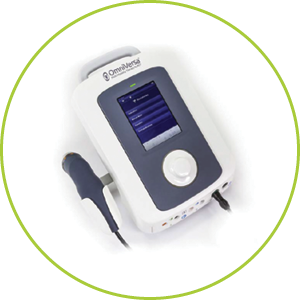February is American Heart Month, a time for healthcare professionals and clinicians to focus on their role in helping patients manage their cardiovascular health. As we age, our bodies go through many changes, and our cardiovascular system is no exception. Fortunately, there are plenty of ways we can help our geriatric patients maintain their health and vitality.
It is essential for therapists to understand the physiological aging process and its effects on cardiopulmonary function when treating patients with age-related comorbidities. By familiarizing ourselves with the changes that come with age, we can build an effective preventative and therapeutic approach for our patients that enhances the impact of our care and improves our patients’ quality of life.
The Aging Cardiopulmonary System and Functional Implications for Therapists
Aging can cause a myriad of changes in the heart and blood vessels that can increase a person’s risk of heart disease. As we get older, our cardiopulmonary function is impacted in the following ways:
Decreased
- Maximum aerobic capacity
- Maximum heart rate/Cardiac Output
- Capillary density
- Arterial distensibility
- Pacemaker cells in the sinoatrial node
- Baroreceptor sensitivity
- Lung elastic recoil
- Vital capacity, tidal volume
- Alveolar surface area
- Respiratory muscle strength
Increased
- Left ventricular wall thickness
- HR/BP response to submax exercise
- Total cholesterol, LDL
- Peripheral vascular disease
- Stiffness of the chest wall
- Residual volume
The functional implications of these changes include decreased exercise capacity, an increase in the work of respiratory muscles, a lower threshold for shortness of breath, and postural hypotension.
With the right tools and interventions, clinicians can help aging patients build up their strength and endurance, increase circulation, increase their aerobic capacity, and enhance their quality of life. ACP offers a comprehensive Cardiopulmonary Program focused on building strength, neuromuscular function, and overall fitness, as well as several continuing education courses for our partners through ACP University that explore rehabilitation for patients with cardiopulmonary compromise in more detail, including:
- Aerobic Exercise for Aging Adults
- Chronic Heart Failure and Rehab
- Chronic Obstructive Pulmonary Disease (COPD)
- Pulmonary Essentials – Assessment and Intervention
- Pulmonary Essentials – Spirometry
- Pulmonary Interventions – Advanced Rehab Technologies
- Cardiopulmonary Program Interdisciplinary Approach (Nursing Home Administrator CE)
By deepening our understanding of cardiopulmonary care, we can make a profound difference in the health and well-being of our aging patients.
If you are interested in learning more about our Cardiopulmonary Program, scheduling training, accessing these courses, or simply want more information on this topic, please reach out to your Clinical Program Consultant.
References:
- Moffat, M. (May 2013). Certification as Exercise Experts for Aging Adults: Courses 1
- Lewis, C., Bottomley, J. (2008) Geriatric Rehabilitation: A Clinical Approach. Upper Saddle River, NJ: Pearson Prentice Hall











